BRUCE Hemphill is the CEO of Old Mutual.
OLD Mutual CEO Bruce Hemphill speaks about plans to split the company and undo 17 years of deals.
BUSINESS DAY TV: Old Mutual is embarking on what it describes as a bold new course to unlock value currently trapped within the group’s structure. As expected, the group announced today that it’s splitting its business into four over the next 2.5 years. The announcement came with the release of its 2015 results, which show an 11% rise in adjusted operating profit to £1.7bn. Joining me on the line with more detail is CEO Bruce Hemphill.
Bruce...so what necessitated the move right now? Is it changing regulatory and economic conditions globally?
BRUCE HEMPHILL: It’s a combination of things. It’s very clear that we have a structure which was designed to deliver a strategy, which was fit for purpose in 1999 when the company listed in London. We know that after that a lot of capital was raised and a lot of acquisitions were made and in 2009 the business got itself into difficulty in the crisis.
The management team then spent a lot of time and a lot of hard work in getting the business to a point where we have these four very strong underlying businesses. But the reality is there are very few synergies between these businesses and there are significant costs in running the structure.
So it really doesn’t stack up and if you think about it from an investment perspective, one investor said to me in London the other day, an active investor said its uninvestable for him and what he meant by that was that he had an interest in one particular asset but wasn’t able to get access to the stock because he couldn’t take emerging market risk.
And then you have emerging market investors who don’t want to pick up developed market risk. And then you have emerging market investors who get confused by having banks and insurers in the same asset. So the kind of underlying reasons for what we’ve announced are very compelling, and given that the answer was so obvious we didn’t think there was any point in hanging around.
BDTV: You do say in the commentary today that there was no strategic logic for the current structure. Was there ever any strategic logic for the structure since the demutualisation in 1999, when Old Mutual listed in London and started acquiring offshore assets? Did it make sense at the time, do you think?
BH: I believe it did and then, firstly, there was a lot of support for the transaction so shareholders supported it, and the other point is that at that time the world was very different to the world we live in today. So if you think about what’s happened between now and then, we’ve been through the crisis which I suppose if you kind of simplify it to its essence was a function of a concentration of financial risk which log jammed the system, and what the regulators have done in response to how the politicians have reacted is to intervene so that people are discouraged from concentrating risk in financial services.
And if you think about the Old Mutual Group, the Old Mutual Group through their holding company in London owns two very significant financial services organisations in one structure in SA through Old Mutual Group Holdings, and in the context of the South African financial market, that’s a massive concentration risk. There are really only four big banks and four big insurers and a UK based company happens to own two of them.
BDTV: So is this move also about de-risking the business and particularly stripping away the emerging markets assets where we have seen currencies sagging over the past couple of years and that putting pressure on your reported earnings because on a constant currency basis they look pretty good, but a lot flatter on a reported basis?
BH: It’s not really about risk management it’s about getting returns for shareholders. So if you think about it in its most simplistic form you’ve got a structure which is no longer fit for purpose, it costs about £80m a year to run and you haven’t got synergies to justify those structures. So you need to take that structure out. The underlying businesses trade essentially at the holding company multiples so theres a sum of the parts discount, so what you then need to do is you need to get the underlying businesses much closer to the natural owners of those businesses which should theoretically unlock another...more value. And then it is fair to say that the market will be better owners than a holding company based in London with 200 people who are keeping the score monthly.
BDTV: Does this move effectively bring Old Mutual home by the end of 2018 when you expect these transactions to be completed?
BH: This is not about bringing Old Mutual home, as I say — it’s about unlocking value for shareholders. In practice, what will happen is that you will end up with Old Mutual Emerging Markets being the key Old Mutual business and that will obviously be based in SA. That business itself is a conglomerate. That business itself has businesses in China, it has businesses in India, it’s got businesses in Latin America, it’s got businesses all over sub-Saharan Africa. Some of them are operational, some of them are investment holdings, so that structure itself needs work.
BDTV: Just looking at the numbers and on a constant currency basis, it looks like, as you said at the beginning, all four businesses are operating strongly although there are some headwinds ahead, including in SA, those are economic headwinds. How do you rate it at the moment?
BH: If you just take a step back and look at the global macro, the global macro is not healthy at all so in all markets businesses are facing headwinds. It’s not easy...I suppose the US is seeing more growth than most markets whether developed or developing markets. China is slowing down, the UK is reasonably strong, Europe is still struggling — we saw (what) Draghi announced yesterday — so wherever you look, the global macro is not great and clearly for emerging markets, particularly like for SA, which are heavily dependent on the commodity cycle with China slowing down, and it’s also not a good thing.
But having said that, the Old Mutual Emerging Markets business, which is primarily the South African business, performed really well. So last year it grew gross sales 17%, covered sales 31% and the NCCF (net client cash flows) grew at 61%. So despite all of those headwinds there are opportunities to grow businesses provided they’re well run and they have some natural advantages which this business does.
BDTV: You alluded to a possible unbundling of Nedbank shares to Old Mutual shareholders, something you’re still considering though. You expect this to be completed by 2018 — when would you have a clear idea of how this process is going to unfold?
BH: Yes, the first thing to say is that what we’ve announced today is a very significant, strategic step for Old Mutual. What everybody then jumps to is they say, we need much more detail, we want to know how it’s going to be done. We’ve provided some detail on Nedbank because we feel that it’s very important that we don’t introduce unnecessary risk into the South African financial system. I talked earlier about how significantly we are exposed to the South African financial system and so the last thing you want in banking is uncertainty, and so we’ve provided some certainty. We’re not sellers of the stake, we will unbundle it and that’s important from the systemic risk perspective.
As regards the other businesses, there are a whole host of options that are available to us. We’ve interrogated a number of routes but it’s really important that we go through a proper process of engagement with all the stakeholders, and that’s not just motherhood and apple pie.
We obviously have shareholders with significant interests in this transaction. We also have debt holders and bond holders with interests in this transaction and they provided us with debt based on the assumption that they had certain assets as security.



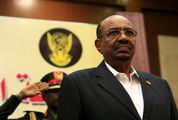




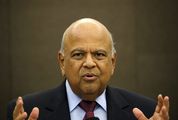
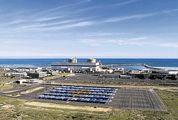


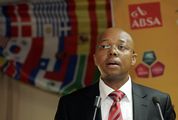




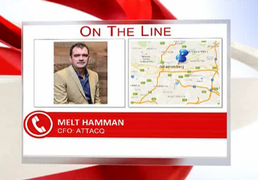






Login OR Join up TO COMMENT